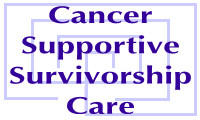|
Fifth Dimension Catalog Contact Us |
|

|
Estrogen and Progestin Bioactivity of Foods, Herbs, and Spices (44247) References |
- 1. Duke JA. Handbook of Medicinal Herbs.
- Boca Raton, FL: CRC Press, 1985.
- 2. Erichsen-Brown C. Medicinal and Other Uses of North American Plants: A Historical Survey with Special Reference to the Eastern Indian Tribes. New York:
- Dover Publications, Inc., 1979.
- 3. Beckham N. Phyto-oestrogens and compounds that affect oestrogen metabolism.
- Aust J Med Herbalism 7(1), 1995.
- 4. Farnsworth NR. Bingel AS, Cordell GA, Crane FA. Fong HHS. Potential value of plants as sources of new antifertility agents 11.
- J Pharmaceutical Sci 64:717- 754, 1975.
- 5. Avis NE, Kaufert PA, Lock MA, McKinlay SM, Vass K. The evolution of menopausal symptoms.
- Clin Endo Metab 7:17-32, 1993.
- 6. Davis DL. Bradlow HL. Can environmental estrogens cause breast cancer?
- Scientific American Oct:169-172, 1995.
- 7. Safe SH. Do environmental estrogens play a role in development of breast cancer in women and male reproductive problems?
- Human and Ecol Risk Assessment 1:17-23. 1995.
- 8. Safe SH. Environmental and dietary estrogens and human health: Is there a problem?
- Environ Health Perspect 103:346-351. 1995.
- 9. Ojasoo 1. Raynaud JP. Dore JC. Affiliations among steroid receptors as revealed by multivariate analysis of steroid binding data.
- J Steroid Biochem Mol Biol 48:31-46, 1994.
- 10. Gupta C, Bullock LP, Bardin CW. Further studies on the androgenic, anti-androgenic, and synandrogenic actions of progestins.
- Endocrinology 120:736-744, 1978.
- 11. Zava DT, Duwe G. Estrogenic and antiproliferative properties of genistein and other flavonoids in human breast cancer cells in vitro.
- Nutr Cancer 27:31-40, 1997.
- 12. McLachlan JA. Functional toxicology: A new approach to detect biologically active xenobiotics.
- Environ Health Perspect 101:386-387, 1993.
- 13. Solo AM, Lin T, Justicia H, Silvia RM, Sonnenschein C. An culture' bioassay to assess the estrogenicity of xenobiotics (EScreen). In: Colbum T, Clement C, Eds. Chemically-Induced Alterations in Sexual and Functional Development:The WildlifeIHuman Connection. Princeton. NJ:
- Princeton Scientific Publishing Co.. pp295-309. 1992.
- 14. DiLorenzo DD. Albertini A, Zava DT. Progestin regulation of alkaline phosphatase in the human breast cancer cell line T47D.
- Cancer Res 51:4470-4475, 1991.
- 15. Mauvais-Jarvis P. Kutten F. Gompet A. Estradiollprogesterone interaction in normal and pathologic breast cells.
- Ann N Y Acad Sci 464:152-167. 1986.
- 16. Eckert RL. Katzenellenbogen BS. Effects of estrogens and antiestrogens on estrogen receptor dynamics and the induction of progesterone receptor in MCF7 human breast cancer cells.
- Cancer Res 42:139-144, 1982.
- 17. Ellison PT. Measurements of salivary progesterone.
- Ann N Y Acad Sci 694:161-176, 1993.
- 18. Adlercreutz H. Goldin BR, Gorbach SL. Hockerstedt KA, Watanabe S. l-Iamalainen EK, Markkanen MH, Makela TH, Wahala KT. Soybean phytoestrogen intake and cancer risk.
- J Nutr 125:757S-770S, 1995.
- 19. Messina MJ, Persky V. Setchell KDR, Barnes S. Soy intake and cancer risk: A review of the in vitro and in vivo data. Nutr Cancer 21:113131, 1994.
- 20. Franke AA, Custer U, Cerna CM, Narala KK. Quantitation of phytoestrogens in legumes by HPLC.
- J Agric Food Chem 42:1905-1913, 1994.
- 21. Wang C, Mlkela I, Hase T, Adlercreutz H, Kurzer MS. Lignans and isoflavonoids inhibit aromatase enzyme in human preadipocytes.
- Steroid Biochem Mol Biol, 1994.
- 22. Makela 5, Poutanen M, Lehtimaki J, Kostian ML. Santti R, Vihko R. Estrogen-specific 1713- hydroxysteroid oxidoreductase Type I as a possible target for the action of phytoestrogens.
- Proc Soc Exp Biol Med 208:51-59, 1995.
- 23. Stoll W. Phytopharmacon influences atrophic vaginal epithelium:
- Double-blind study of Cimicifuga versus estrogenic substances.
- Therapeuticum 1:23-31. 1987.
- 24. Chury J. Uber den phytoostrogengehalt einiger pflanzen.
- Experentia 16:194-200, 1960.
- 25. Rosenblum ER, Campbell IM, Van Thiel DH. Gavaler JS. Isolation and identification of phytoestrogens from beer. Alcoholism.
- Clin Exp Res 16:843-845, 1992.
- 26. Fenselau C, Talalay P. Is oestrogenic activity present in hops? Fd Cosmet Toxicol 11:597- 603, 1973.
- 27. Khwaja TA, Dias CB, Pentecost S. Recent studies on the anticancer activities of mistletoe (Viscum albumin) and its alkaloids.
- Oncology 43S:2-7, 1986.
- 28. Prior JC, Vigna YM, Barr SI, Rexworthy C. Lentle BC. Cyclic medroxyprogesterone treatment increases bone density: A controlled trial in active women with menstrual cycle disturbances.
- Am J Med 96:521-530,1994.
- 29. Follow K, Lubbert H, Boquoi E. Follow B. Progesterone metabolism in normal human endometrium during the menstrual cycle and in endometrial carcinoma.
- J Clin Endocrinol Metab 41:729-737. 1975.
- 30. Gupta C. Bullock LP. Bardin CW. Further studies on the androgenic. anti- androgenic. and synandrogenic actions of progestins.
- Endocrinology 102:736-744. 1978.
- 31. Dentali S. Hormones and yams: What's the connection?
- The American Herb Assoc 10:4-5. 1994.
- 32. Gaby A. Multilevel yam scam.
- Townsend Letter for Doctors and Patients Jan:96-97. 1996.
- 33.Kumagai A, Nishino K. Shimomora A, Kin I. Yamamura Y. Effect of glycyrrhizin on estrogen action.
- Endocrinol Japan 14:34-38, 1967.
- 34.Kraus S. The anti-estrogenic action of beta- glycyrrhetinic acid.
- Exp Med Surg 27:411- 420, 1969.
Permission
Back to the Table Of Contents
- Permission granted by the publisher and authors:
- Copyright © 1998 The Proceedings of the Society for Experimental Biology and Medicine 1998 Mar;217(3):369-78
Society for Experimental Biology and Medicine
http://www.sebm.org/
Aeron LifeCycles Clinical Laboratory
http://www.aeron.com
ZRT Laboratory
http://www.zrtlab.com/
Requests for reprints should be addressed to
Aeron LifeCycles Clinical Laboratory
1933 Davis St.. Suite 310, San Leandro, CA. 94577.
|
You are welcome to share this © article with friends, but do not forget to include the author name and web address. Permission needed to use articles on commercial and non commercial websites. Thank you. |